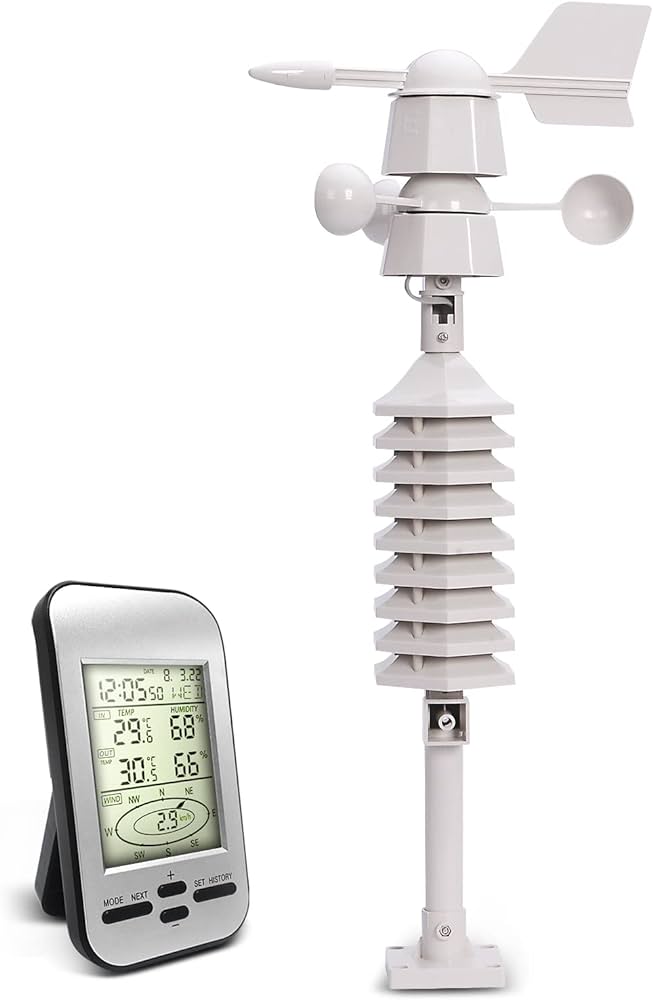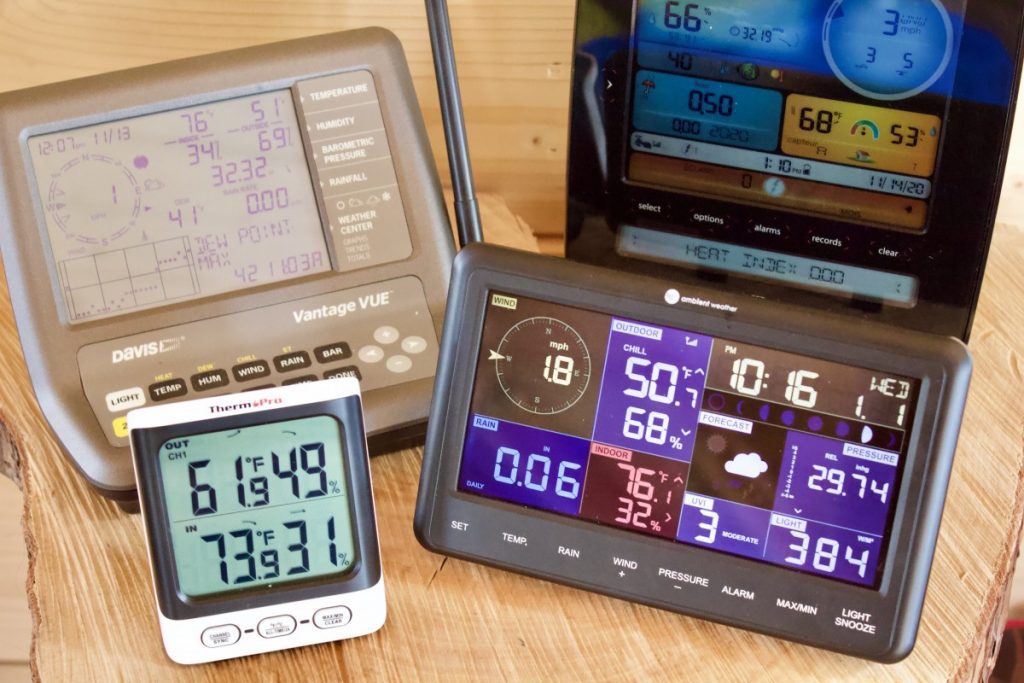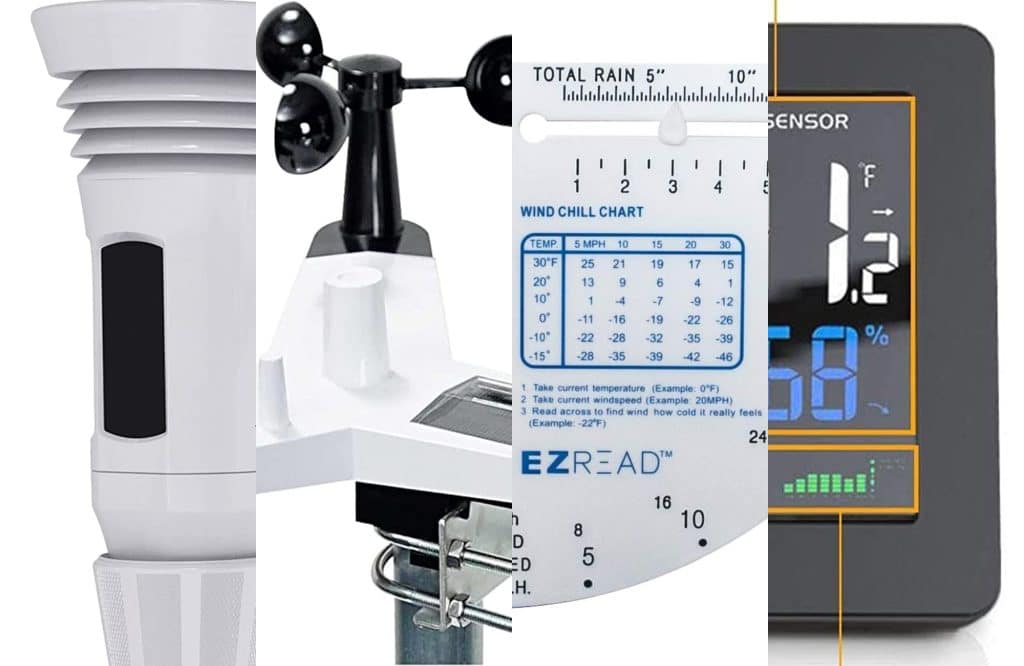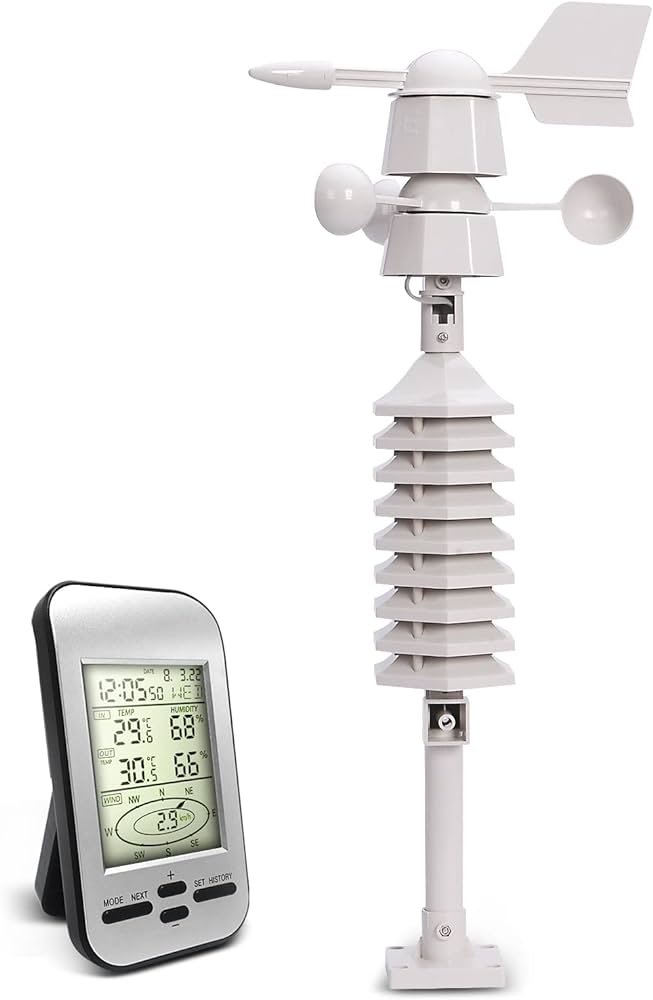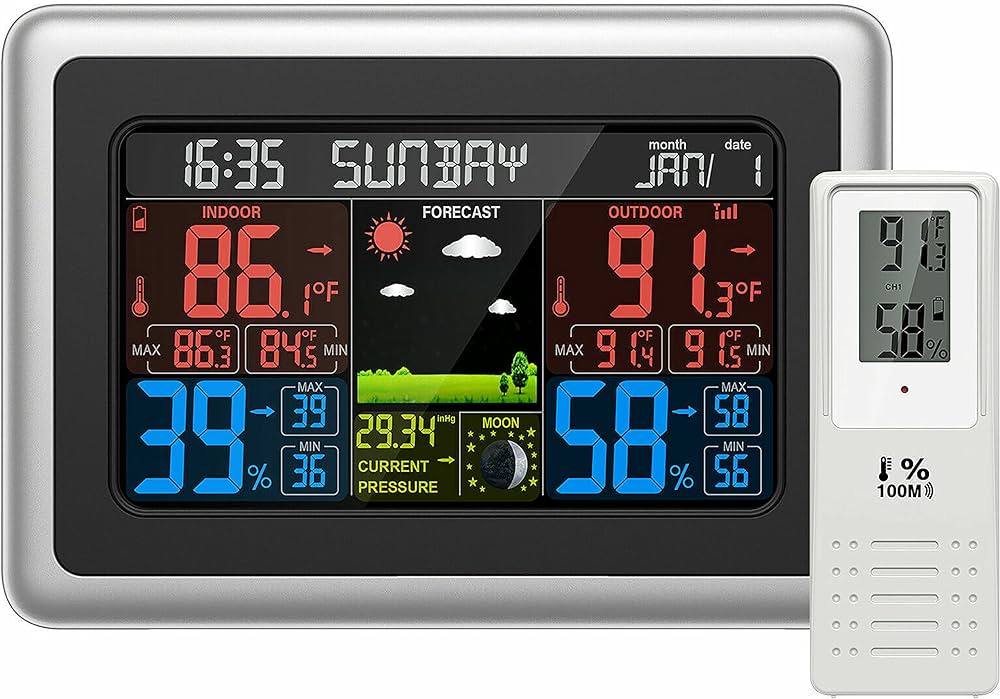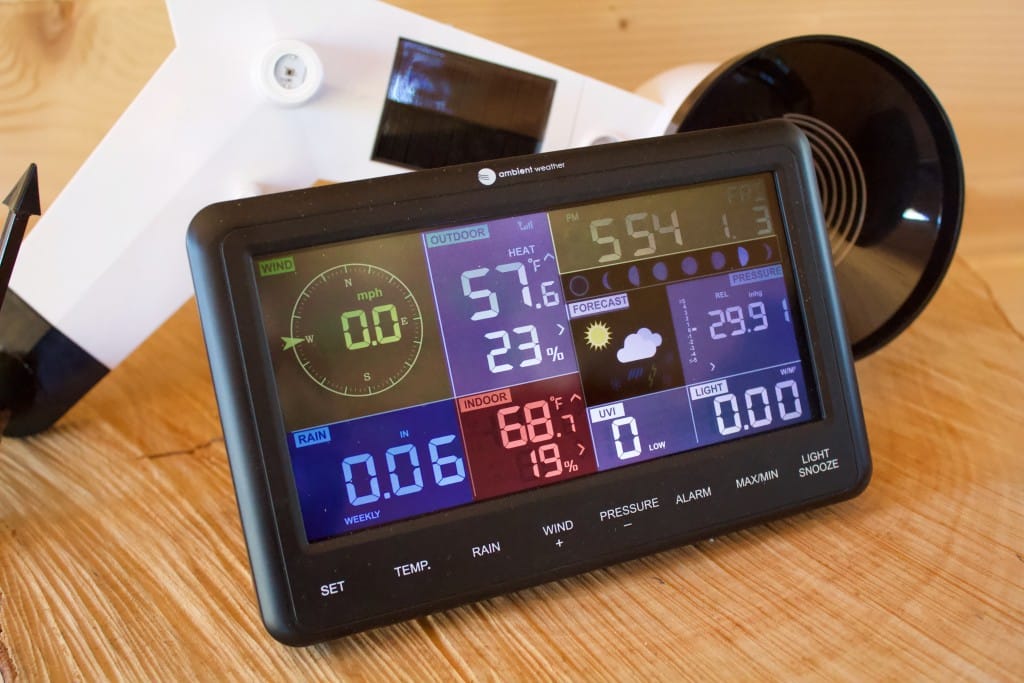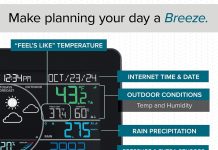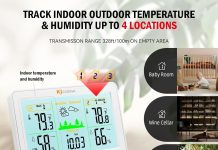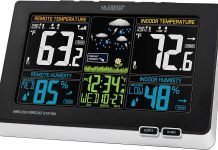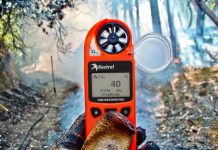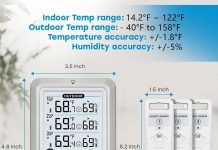Interested in knowing just how accurate your home weather station is at measuring temperature? We’ve got all the details you need. Whether you rely on your device to plan outdoor activities, monitor your garden, or simply track the weather, it’s crucial to ensure that it provides accurate readings. In this article, we’ll delve into the accuracy of home weather station temperature measurements, uncovering the factors that can impact their precision and offering valuable insights for maximizing their effectiveness. So, get ready to enhance your weather monitoring experience with our expert guidance.
This image is property of w2f2z6e6.stackpathcdn.com.
Review contents
Factors Affecting Accuracy of Home Weather Station Temperature Measurement
When it comes to measuring temperature with a home weather station, several factors can affect the accuracy of the readings. Understanding these factors is essential for getting reliable temperature measurements. In this article, we will discuss the various aspects that can impact the accuracy of temperature readings from a home weather station.
Sensor Placement
The placement of the sensor plays a crucial role in obtaining accurate temperature measurements. Factors such as distance from heat sources, exposure to direct sunlight, obstructions, and reflective surfaces can all affect the sensor’s readings.
Distance from Heat Sources
To ensure accurate temperature measurements, it is important to place the sensor away from any potential heat sources. Heat sources, such as electrical equipment or heating systems, can generate additional warmth that can influence the sensor’s readings. By maintaining an appropriate distance, you can avoid any unwanted heat bias and obtain more accurate temperature data.
Avoiding Direct Sunlight
Direct sunlight can significantly impact the temperature readings of a home weather station. When exposed to sunlight, the sensor absorbs radiant energy, leading to higher temperature readings than the actual ambient temperature. Therefore, it is advisable to position the sensor in a shaded area, away from direct sunlight, to ensure more accurate measurements.
Avoiding Obstructions
Obstructions surrounding the sensor can create localized temperature variations that may affect its accuracy. For example, placing the sensor too close to a building or vegetation can cause it to record higher temperatures due to the reflected heat. To minimize these influences, it is recommended to position the sensor in an open area, free from obstructions, to provide a representative measurement of the surrounding temperature.
Avoiding Reflective Surfaces
Reflective surfaces, such as glass or concrete, can reflect radiant energy onto the sensor, leading to artificially higher temperature readings. It is important to take this into consideration when placing the sensor and ensure it is not in close proximity to any highly reflective surfaces.
Sensor Calibration
Calibrating the sensor is another critical factor in obtaining accurate temperature measurements. It involves adjusting the sensor’s readings to match a known reference value, such as a mercury thermometer.
Factory Calibration
Most home weather stations come with factory-calibrated sensors, which means they are already adjusted to provide reasonably accurate temperature measurements. However, it is important to note that factory calibration is a general setting and may not account for specific environmental conditions unique to your location. As a result, periodic recalibration may still be necessary.
User Calibration
User calibration allows you to fine-tune the sensor’s readings to match the actual temperature in your specific location. This can be done by comparing the readings from the home weather station with a trusted reference thermometer and making necessary adjustments to the sensor’s calibration settings. User calibration is particularly beneficial in areas with significant microclimate variations or when precise temperature accuracy is required.
Regular Recalibration
Over time, the accuracy of the sensor can drift, especially due to factors like aging or exposure to extreme weather conditions. Regular recalibration is recommended to maintain the accuracy of temperature readings. It is advised to refer to the manufacturer’s instructions or guidelines on how often the sensor should be recalibrated.
Radiation Effects
Radiation from various sources can have a considerable impact on the accuracy of temperature readings.
Direct Solar Radiation
Direct solar radiation, especially when the sensor is directly exposed to the sun’s rays, can cause the sensor to absorb radiant energy and produce elevated temperature readings. It is crucial to shield the sensor from direct sunlight to prevent the interference caused by solar radiation.
Radiant Energy Reflection
Reflective surfaces, such as water bodies or light-colored buildings, can reflect radiant energy onto the sensor, leading to higher temperature readings. These reflections can misrepresent the true ambient temperature, making it important to place the sensor away from highly reflective surfaces.
Radiant Energy Absorption
Certain materials, such as asphalt or dark-colored objects, absorb more radiant energy than others. Placing the sensor near such materials can result in inaccurate temperature measurements. It is advisable to position the sensor in an area where it is not significantly influenced by objects with a high radiant energy absorption capacity.
This image is property of www.popsci.com.
Heat Sources
Both indoor and outdoor heat sources can impact the accuracy of temperature measurements.
Indoor Heat Sources
When placing a weather station indoors, it is important to consider nearby heat sources, such as heating vents, radiators, or electronic devices. These heat sources can introduce additional warmth, leading to higher temperature readings. Positioning the sensor away from such sources can help ensure more accurate temperature measurements.
Outdoor Heat Sources
Outdoor heat sources, such as asphalt roads, concrete structures, or nearby buildings, can radiate heat and impact the accuracy of the sensor’s readings. Placing the sensor in an area where it is not directly affected by outdoor heat sources can minimize their influence on the temperature measurements.
Ambient Temperature
The surrounding ambient temperature can also play a significant role in affecting the accuracy of temperature measurements.
Temperature Variations in the Surrounding Environment
Microclimate variations, caused by factors such as nearby bodies of water, vegetation, or urban structures, can lead to temperature variations in the surrounding environment. Placing the sensor in an area that is representative of the general ambient temperature can help obtain more accurate measurements.
This image is property of Amazon.com.
Humidity
Humidity levels can influence the accuracy of temperature measurements captured by a home weather station.
Influence of Humidity on Temperature Measurement
Higher humidity levels can affect the sensor’s ability to accurately measure temperature. Moisture in the air can lead to evaporative cooling, causing lower temperature readings. It is essential to consider the humidity levels in your location and understand the potential impact on temperature measurements.
Air Movement
Air movement, whether caused naturally or artificially, can impact temperature measurements.
Wind Speed
Strong winds can cause convective heat loss from the sensor, resulting in lower temperature readings than the actual ambient temperature. Placing the sensor in an area shielded from direct wind exposure can aid in obtaining more accurate temperature measurements.
Air Convection
Air convection, caused by factors like ventilation systems or nearby fans, can affect the accuracy of temperature readings. The movement of air can cool or heat the sensor, leading to variations in temperature measurements. Positioning the sensor away from such airflow sources is recommended to minimize their influence on temperature accuracy.
This image is property of Amazon.com.
Weather Conditions
Different weather conditions can also impact the accuracy of temperature measurements.
Rain
During rainfall, the presence of water droplets can influence the sensor’s ability to measure temperature accurately. The water film on the sensor can cause evaporative cooling or alter the thermal properties, resulting in inaccurate readings. It is advisable to protect the sensor from direct rain exposure for more reliable temperature measurements.
Snow
Snow can insulate the sensor and create a temperature differential between the sensor’s surface and the ambient air. This differential can affect the accuracy of the temperature readings, leading to inaccuracies. Proper shielding and positioning can help minimize the impact of snow on temperature measurements.
Fog
Foggy conditions can affect the sensor’s ability to accurately measure temperature. The moisture content in the air can cause evaporative cooling or condensation on the sensor, leading to inaccurate readings. It is important to position the sensor away from areas prone to fog accumulation for more precise temperature measurements.
Extreme Temperatures
Extreme temperature conditions, whether excessively hot or cold, can put additional stress on the sensor and affect its accuracy. Exposure to extreme temperatures over an extended period can lead to sensor drift or malfunction. It is advisable to choose a home weather station with a wide temperature operating range and protect the sensor from extreme weather conditions to maintain accuracy.
Storms
Stormy weather, including thunderstorms or high winds, can create turbulent conditions that may affect the accuracy of temperature measurements. It is important to position the sensor in a secure location away from any potential storm damage and consider the impact of stormy weather on temperature accuracy.
Sensor Age and Quality
The age and quality of the sensor can also contribute to the accuracy of temperature measurements.
Sensor technology and materials can evolve over time, leading to improved accuracy and reliability. Upgrading to a newer, higher-quality sensor can help ensure more accurate temperature measurements. Additionally, regular maintenance and cleaning of the sensor can extend its lifespan and maintain accuracy.
This image is property of w2f2z6e6.stackpathcdn.com.
Elevation and Location
Lastly, elevation and location can influence the accuracy of temperature measurements.
Effect of Altitude
At higher altitudes, the atmospheric pressure decreases, leading to lower boiling points for liquids. This can impact the accuracy of the temperature readings, especially if the sensor relies on liquid-based mechanisms. It is important to consider the calibration and adjustment requirements when using a home weather station at higher altitudes.
Microclimates
Microclimates refer to localized weather conditions that differ from the surrounding area. Factors such as nearby bodies of water, vegetation, or topographic features can contribute to microclimate variations. It is crucial to understand the microclimate characteristics of your location and ensure the sensor is placed in an area representative of the overall temperature conditions.
Urban Heat Island Effect
Urban areas, characterized by dense buildings, concrete surfaces, and low vegetation, can create heat islands. These areas typically experience higher temperatures than surrounding rural regions, which can impact the accuracy of temperature measurements. Care should be taken to account for the urban heat island effect when positioning the sensor in urban environments to obtain accurate temperature readings.
In conclusion, several factors can affect the accuracy of temperature measurements from a home weather station. Proper sensor placement, calibration, consideration of radiation effects, the influence of heat sources, ambient temperature variations, humidity levels, air movement, weather conditions, sensor age and quality, as well as elevation and location, all play important roles in obtaining accurate temperature readings. By understanding and addressing these factors, users can ensure more reliable temperature measurements from their home weather stations.

